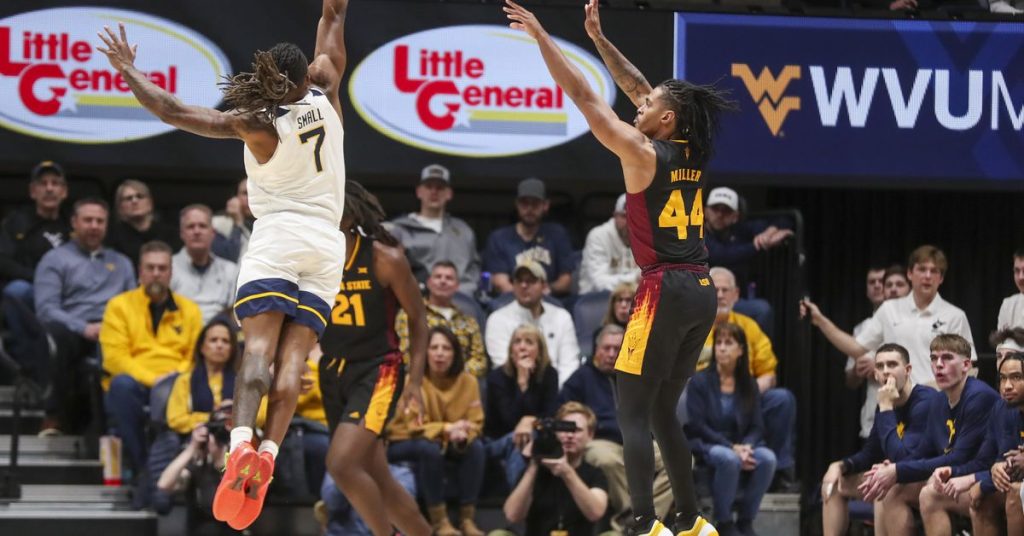Gonzaga’s 2024–25 season was marked by a powerful frontcourt and an inconsistent backcourt. The Zags could score against anyone, but only when their outside shots were falling. When they weren’t, the offense stagnated, making the team much easier to defend. This sets the stage for an exciting 2025–26 roster. The recruitment of Adam Miller, a prolific shooter, a hopefully fit Steele Venters, and Braden Huff transitioning to a stretch-four role offers Gonzaga a revamped perimeter strategy. Additionally, if Mario Saint-Supery commits, he would provide a 6’4” scoring guard who shot 36% from three last season in Spain. While he might not start, he could serve as a valuable backup. With Miller’s shooting ability, Huff’s development, and deeper bench strength, the Zags finally resemble a team capable of stretching the floor and coping with off nights from beyond the arc.
The Issues from Last Year
Last season, Gonzaga’s perimeter shooting struggled with consistency. When both Nolan Hickman and Khalif Battle went cold together, the offense became painfully predictable. Although their high-low game remained effective, the Zags lacked a reliable alternative when outside shots failed to connect.
Hickman ended the season as one of the top outside threats nationally, but if he missed his early attempts, he became less involved. He rarely drove to the basket and seldom drew fouls, amplifying the impact of his quiet outings. With the loss of their top distributing point guard, the margins in half-court offense grew thin. The Zags needed more dependable outside scoring options to secure wins in close games. The positive? They’ve replenished their roster with shooters who can fundamentally alter the floor spacing from the start, providing options that were previously lacking.
A Close Look at the Stats
Last season, Gonzaga posted a 35.4% shooting percentage from three, ranking 91st nationally. The year before, they shot 36.2% and were 29th. While this drop might seem minor, it significantly impacted game outcomes. The team lost a notable number of close games, with missed perimeter shots often determining their fate against teams like UConn, Kentucky, Saint Mary’s, and Houston. This marked their worst three-point shooting percentage since 2012 and their first finish outside the top 50 in over a decade.
The Zags adapted by attempting fewer three-pointers, ranking 312th nationally in three-point rate. Among top-25 teams, only Saint Mary’s shot less frequently. They lost confidence in their outside shooting, reverting to their foundation of post plays and two-point possessions. This approach worked at times, but narrowed their margin for error considerably.
Backcourt Breakdown
There were moments when Gonzaga’s backcourt appeared formidable from deep, yet they also faced extended cold spells. While Hickman achieved an impressive 44.5% shooting from three, he remained selective with his attempts. Conversely, Battle contributed volume but lacked efficiency, and when both slumped simultaneously, the team’s performance declined sharply. For instance, he had a standout night against Georgia, then followed it up with a quiet performance against Houston.
Addressing the Stretching Issue
This offseason, Gonzaga tackled its primary weakness with targeted additions. Adam Miller joins as a high-volume shooter, boasting nearly 43% accuracy from three on over 4 attempts last season. His off-ball movement and spot-up shooting should thrive in a Gonzaga system supported by strong post players. Steele Venters returns as a recognized perimeter shooter; if he remains healthy, he should excel in a less demanding role. Meanwhile, Huff’s shift towards a stretch-four position promises to enhance offensive spacing, as he previously demonstrated shooting proficiency in high school.
Revamping the Backcourt
When Gonzaga’s shots were falling last year, they appeared nearly unbeatable. The combination of Battle and Hickman showcased the potential of an efficient scoring offense. However, when both players struggled simultaneously, the offense became erratic. While this year’s roster won’t resolve every concern, it offers significantly more stability and versatility.
Looking Ahead: Signs of Hope
Despite last season’s inconsistent shooting, Gonzaga led the nation in scoring thanks to a dominant interior. The returning frontcourt appears more experienced and formidable for 2025-2026. New recruits like Miller, Venters, and potentially Saint-Supery add credible outside shooting along with clearer roles and improved spacing across positions. The strategic framework remains intact; it’s the components that have changed.
Questions persist regarding player health and contribution levels. However, if even a few uncertainties tilt favorably, Gonzaga could enter the conversation for a top 10 ranking. While replacing the scoring void left by Hickman and Battle poses a challenge, the Zags’ offseason adjustments have significantly fortified their roster, introducing a range of threats and a newfound balance. Excitingly, with still several roster spots available, Gonzaga isn’t finished shaping its team.



